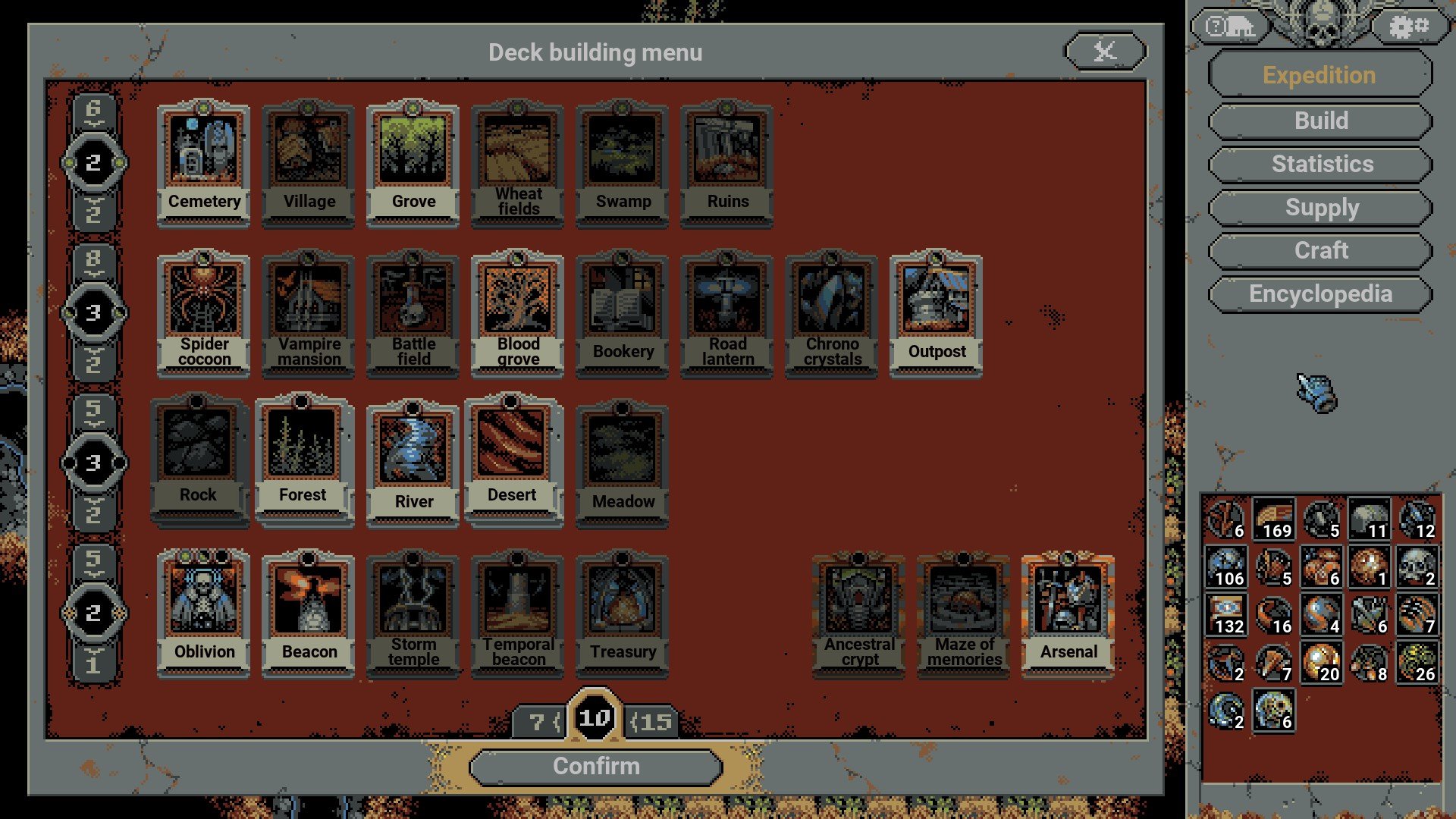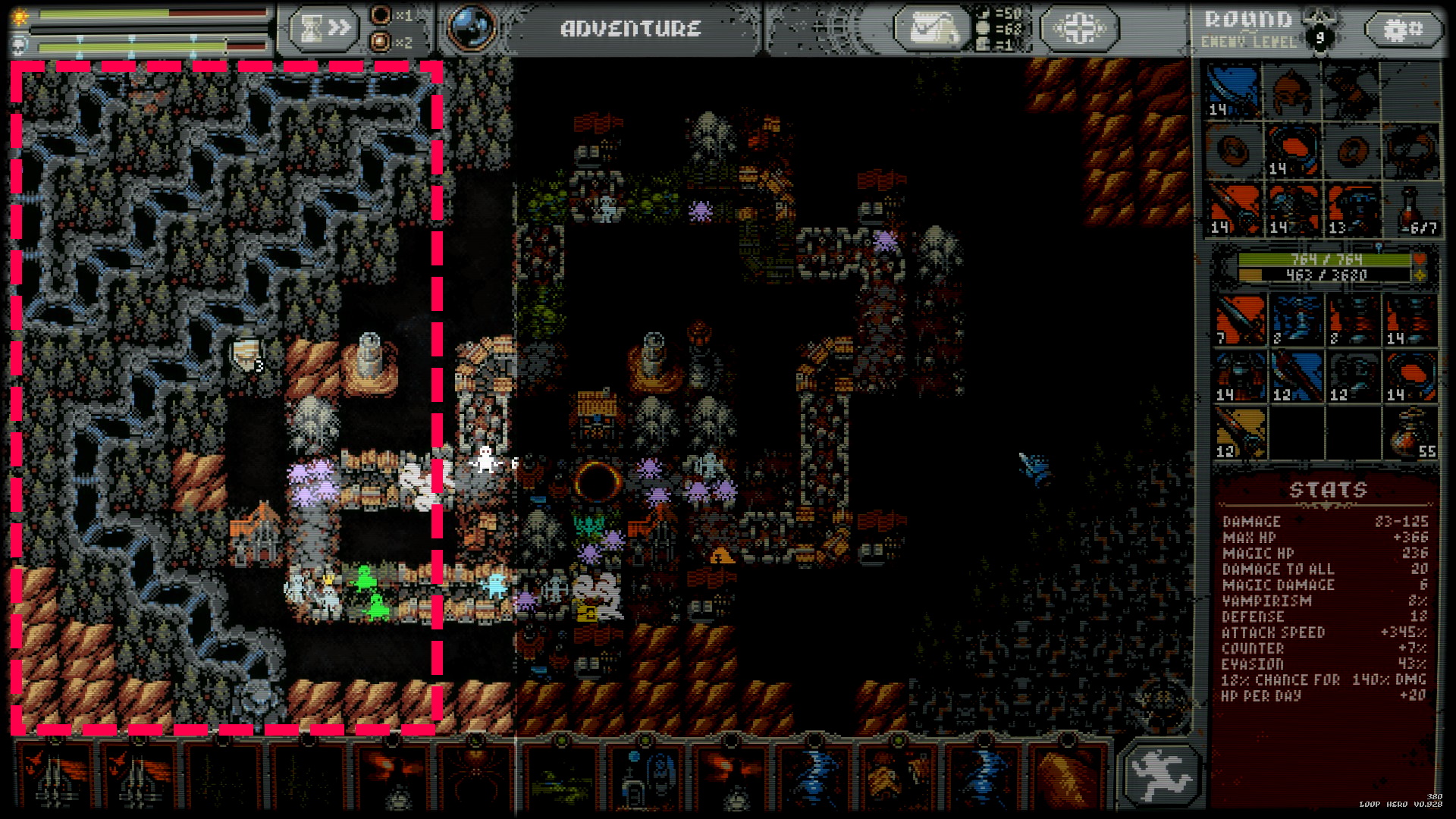
While these may not be much to look at, the setup provides a very manageable source of loot. For one, placing a Grove next to a Mansion will spawn Blood Golem enemies. Fortunately, there are a couple of different ways to undermine the challenge a bit. While I am all for making things a bit more challenging from time to time, I’ve never been much of a fan of the Vampire Mansion.

Just be aware that these will also spawn Harpies on a fairly frequent basis.

Combining any form of Mountain/Rock tiles in a 3×3 grid will lead to a health boost every couple of days, as well as a boost for adjacent Mountain/Rock tiles. Additionally, the clots will also provide a nice little loot boost, so give those a look.Īnother combo that we have mentioned in past coverage of Loop Hero, but is still worth mentioning here as well, is the Mountain Peak. Though it may spawn a few additional Blood Clot enemies, they are fairly weak overall, especially against any sort of magic attacks. However, if you want to pull in a little extra scratch, placing two battlefields with an overlap in the area of effect will form a Blood Path.
#River loop hero free#
Being able to pull in a free lootbox every day will certainly help in the long battle against the Lich. I’ve always been a fan of the Battlefield tiles. If placed next a Treasury or Rock/Mountain tile (see the checkerboard pattern referred to in our beginner’s guide), it will help boost the tile’s health restoration effectiveness from two up to three hit points per day. Instead, it \’s best to adjoin them with other items in between to create Blooming Meadows. As we’ve mentioned before, while the tiles can be grouped into a large, mass plantation, that isn’t your best option. Please note that this isn’t necessarily an exhaustive list, as we are still uncovering them as we go! For all of you folks out there, here is a running list of all of the combos that we’ve discovered so far. That said, we understand that there are plenty of you that would rather cut through the bullshit and know exactly what you’re doing before ever stepping foot in the loop. Part of the fun of playing is uncovering those special hybrids for the first time.
#River loop hero full#
The Corps will continue to work closely with the Plaquemines Parish government to ensure the extreme low water is safely passed without significant impacts to residents and businesses.As we’ve mentioned in a couple of our past guides, Loop Hero is chock full of undocumented tile combos. “These plants will take the out the chloride in the water and still produce approximately 1 million gallons of water for everyday use.” “We have secured two reverse osmosis machines that will run at the Boothville and East Pointe à la Hache water facilities,” said Plaquemines Parish President Kirk Lepine. The parish has implemented a proactive mitigation plan that will ensure safe and sufficient water supplies for parish residents. The greatest risk associated with the saltwater intrusion is the appearance of unsafe salinity levels at the intakes of municipal drinking water intakes in Plaquemines Parish. The sill has been constructed on three previous occasions, in 1988, 1999, and again in 2012. The sill will take approximately two weeks to complete but will demonstrate benefits in advance of completion. The sill will be creating using sediment dredged from an area designated for this purpose. To arrest the upriver movement of the salt water and reduce the risk to freshwater intakes, USACE will construct an underwater barrier sill near Myrtle Grove, LA. However, in times of extreme low volume water flow, unimpeded salt water can travel upriver and threaten municipal drinking water and industrial water supplies. Under normal conditions, the downstream flow of the river prevents significant upriver progression of the salt water. Denser salt water moves upriver along the bottom of the river beneath the less dense fresh water flowing downstream. The intrusion of salt water into the river is a naturally occurring periodic condition because the bottom of the riverbed between Natchez, MS, and the Gulf of Mexico is below sea level. The Mississippi River’s volume of water has fallen to a level that allows salt water to intrude upstream.

“This week, the projected location of wedge’s toe in combination with current National Weather Service forecasts we’ve reached our triggers for constructing the barrier sill.” “Once the river volume begins to fall in low water season, we regularly monitor the progression of the saltwater wedge on the Mississippi river,” said David Ramirez, chief of the New Orleans District’s Lower Mississippi River Management Branch. Army Corps of Engineers, New Orleans District will construct an underwater sill across the bed of the Mississippi River channel to prevent further upriver progression of salt water from the Gulf of Mexico.


 0 kommentar(er)
0 kommentar(er)
